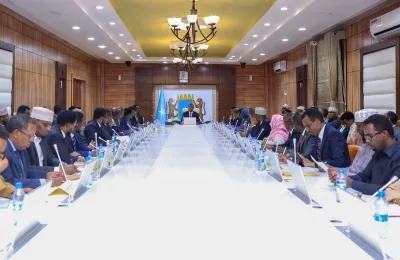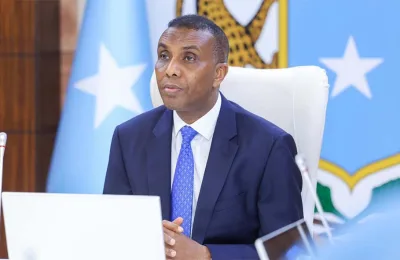Former Minneapolis police officer Mohamed Noor is set to stand trial for the fatal shooting of…

Former Minneapolis police officer Mohamed Noor is set to stand trial for the fatal shooting of Justine Damond, an unarmed Australian woman who called 911 to report a possible sexual assault happening in the alley behind her home.
Noor, who was fired after the July 2017 shooting, is charged with murder.
Here are some key elements as jury selection begins Monday:
JUSTINE DAMOND SHOOTING: WHAT HAPPENED
Noor, 33, shot Damond after she approached his police cruiser. Damond, a 40-year-old life coach and dual Australian-American citizen, had called 911 to report a possible assault.
Officer Matthew Harrity was driving that night and told investigators he heard a voice and a thump and caught a glimpse of someone outside his window. Harrity said he was startled and thought his life was in danger. He said he heard a sound and looked over to see that Noor had fired past him through the driver’s side window, hitting Damond.
Noor refused to talk to investigators. He was fired after he was charged but is appealing his termination.
MOHAMED NOOR TRIAL: THE CHARGES, AND CHALLENGES
Noor, who is Somali-American, was charged with second-degree intentional murder, third-degree murder and second-degree manslaughter. The most serious charge, second-degree murder, carries a presumptive sentence of more than 25 years in prison.
Minnesota law allows police officers to use deadly force to protect themselves or their partners from death or great bodily harm, however prosecutors have said there was no evidence that Noor faced such a threat. Noor’s attorneys, though, intend to argue that he acted reasonably in self-defense.
COP CHARGES, CONVICTIONS ARE RARE
Susan Gaertner, a former Minnesota prosecutor now in private practice who has no connection to the case, said it’s difficult to prove that an officer acted unreasonably when making a split-second decision.
“The law recognizes that second-guessing that life-or-death decision is something you need to do with great care. And it’s natural for a jury to hesitate saying to a police officer, ‘Well if it had been me, I wouldn’t have pulled the trigger.’”
“These are tough, tough cases,” she said.
Police officers are rarely charged in on-duty shootings, much less convicted. A database published by the Washington Post shows that since the start of 2015, U.S. police officers have shot and killed between 900 to 1,000 people each year.
Since 2005, though, only 98 nonfederal officers have been charged with murder or manslaughter in an on-duty shooting, according to data compiled by Philip Stinson, a criminologist at Bowling Green State University. Some of those prosecutions are pending, but only 35 officers have been convicted, and often those convictions were for lesser offenses, Stinson said.
Only three officers stand convicted of murder; four others had their murder convictions overturned.
WHAT TO EXPECT IN MOHAMED NOOR TRIAL
Noor’s partner, Harrity, is expected to testify, along with several experts on forensics and the use of force by police. Damond’s fiance, Don Damond, is also expected to testify. He was out of town on the night Justine was killed, but he spoke to her by phone while she was waiting for the police.
Noor’s attorneys haven’t said whether he will testify. If he does, prosecutors may be able to introduce some evidence that the defense wanted to keep out of the state’s case, including that he refused to speak to investigators. They also could bring up a 2015 psychological test that showed Noor disliked being around people and had difficulty confronting others. Despite that test, a psychiatrist found him fit to be a cadet officer.
The trial is expected to last weeks.
IMPACT OF JUSTINE DAMOND CASE
Damond’s death spurred immediate changes and cost people their jobs.
The police chief at the time, Janee Harteau, was out of state when the shooting happened and didn’t return for several days. When she did return, she found herself defending Noor’s training, and she was soon forced out of her job by Mayor Betsy Hodges. Hodges, herself, lost her bid for re-election four months after Damond’s death in a race influenced by that shooting and the 2015 police shooting of Jamar Clark, a black man killed in a struggle with two officers.
Medaria Arradondo, who replaced Harteau as police chief, immediately moved to strengthen the department’s policy on body cameras by requiring that they be activated immediately when an officer responds to a call or makes a traffic stop.
Separately, Damond’s father, John Ruszczyk, has filed a $50 million lawsuit against Noor, Harrity, the city and police leaders, alleging that his daughter’s civil rights were violated. That case is on hold in federal court until criminal case is resolved.
Source: Twincities







